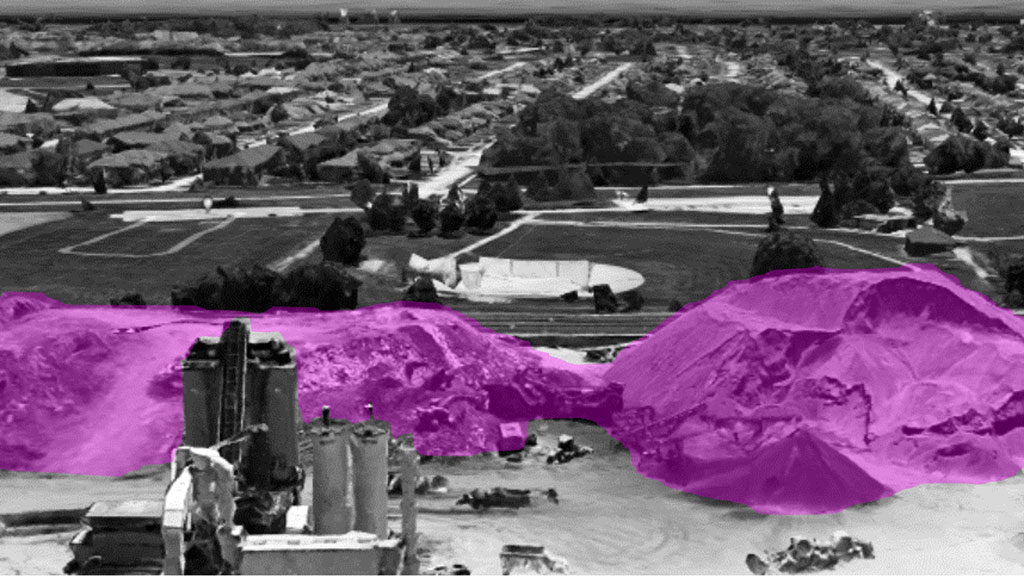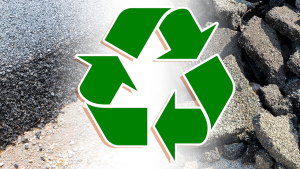A best practice guide for the stockpiling, processing and use of reclaimed asphalt in paving projects should be available this spring.
The Ontario RAP Report & Best Practice Guide will include stockpiling quality assurance specifications, an examination of good management and processing operations, highlights of innovative and successful RAP (reclaimed asphalt pavement) projects and recommendations to overcome challenges to its wider use in municipal road projects.
Those challenges include the lack of space to stockpile and process RAP, causing stockpiles that are “continuously growing,” said a speaker at the recent Ontario Asphalt Pavement Council’s (OAPC) fall seminar.

Other barriers include the fact that more and more municipalities are using less of the material, and that there are no enforced standards on the management and processing of RAP prior to its incorporation in the asphalt mix production, said the Ontario Good Roads Association’s technical products and research co-ordinator Amin Mneina.
Garnered from plant waste, demolition and milling projects, RAP has many advantages including reducing the cost of highway construction projects, saving valuable and diminishing virgin aggregate, diverting solid waste away from landfill sites and reducing greenhouse gas emissions.
But achieving wider use of RAP in municipalities is still a challenge with many barriers to overcome, webinar participants were told.
Based on data compiled by the association, only 55 per cent of 108 Ontario municipalities allow the use of RAP in their paving.
In those municipalities that do allow it, there are strong restrictions such as enforcing a 15-per-cent limit in the surface coarse, said Mneina.
“We’re trying to connect the disconnects,” said Mneina in outlining the broad overall objectives of the guide, which is a joint effort of the association and the OAPC.
Its publication will be the culmination and compilations of two consecutive studies. The first, conducted by the association, was a 2019 satellite survey that involved scanning 114 asphalt plant facilities using Google Earth Pro and some historic images.
“We wanted to get a better perspective on the amount of RAP that was available,” said Mneina, outlining the purpose of the satellite initiative.
Based on the data collected, it was estimated there were 6.7 million tonnes of RAP at those facilities. Those satellite image estimates were verified in a control comparison using the actual figures recorded in a second follow up survey conducted between December 2020 to May 2021 in partnership with OAPC and the Municipal Engineers Association.
Circulated to 114 hot mix asphalt (HMA) production facilities and 441 municipalities in Ontario, the survey elicited responses from 40 HMA plant producers and 25 municipal facilities, with respective figures of 23 million tonnes and 134,000 tonnes of stockpiled RAP.
In an interview following the seminar, he described the response rate as “positive.” Although not overly long, it did require effort and time to complete.
“What it (the survey) told us is that RAP is not being used to its full potential.”
Contractors need both expensive equipment and space to properly stockpile and process RAP. If there is a limited municipal demand for the material in road projects, there is less incentive to make those investments, he pointed out.
During the presentation, he conceded there is still a negative view of RAP and that probably stems from its “overuse” in the 1970s.
Those perceptions were somewhat borne out during a real time question he asked, first of producers, and then of municipal officials, on the factors that restrain its use. Some of the varied answers included municipal specifications, quality concerns and material availability.
Titled Responsible RAP Use, his presentation included recommendations for proper stockpiling procedures including using light bulldozers to minimize compaction and protecting piles from the weather wherever possible.










We are fighting a never ending battle with major road authorities to add a small percentage of RAP…… a 20% allowable spec to maybe 30% if you are successful. We will never get high enough to get rid of the RAP that is accumulating due to a reluctance to change. Better to allow 100% RAP product in other product lines that are not as critical and load bearing, say bicycle and walking paths. Also consider using 100% RAP mixes as patching material, since the road being repaired no longer meets spec anyway and the patch should outlast the adjacent material if done right. We can now recycle old asphalt using safer re-heating techniques like infrared or double barrelled asphalt plants. Just look at the value of that waste asphalt sitting on piles…..in a 100,000 tonne pile there is about 5000 tonne of bitumen at 6-$800 per tonne, and 95,000 tonne of aggregate at $10-20 per tonne. Can we afford not to use +5 million dollars worth of inventory?